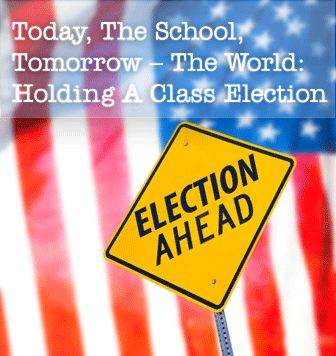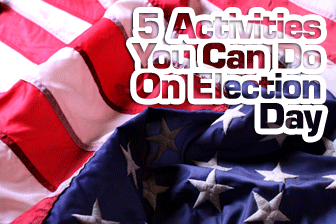Today, The School, Tomorrow Ė The World: Holding A Class Election


To help them connect with their host culture on this important day in U.S. government, try one or more of the following activities with your ESL class.
Take a Vote
Begin the activity by playing a few rounds of the game Would You Rather? If you have never played this game with your ESL class, it can be an easy way to get your students to share their opinions. You play the game by getting all of your students on their feet and then posing a question that starts with the phrase “would you rather.” For example, you might ask, “Would you rather have popcorn or candy at the movies?” For each option, point to one side of the room. Explain to your students that they should move to the side of the room which represents their answer. Then ask a few students to volunteer the reason behind their answer. Not everyone in your class will have a speaking role in this activity (unless you make that happen), but everyone will be participating. This also gives you the chance to call on certain students who might not otherwise offer an answer during class.
After playing the game, ask your students how it felt to be on the side of the room with the majority of the class. Then ask those students who were in the minority how they felt. Encourage your students to share the reasons for their feelings. Would there ever be a reason to stand on the side of the room that did not represent your answer? What do your students think?
After this public vote of sorts, introduce the topic of secret ballots. Explain that in this type of voting no person knows what another person has voted. Give your students some questions to discuss in small groups like the following: Why is voting done by secret ballot? What might happen if votes were not secret? How could we hold a secret ballot in our class? What would be the benefit of doing that? Close the activity by having your students write an opinion piece on the positive or negative effects of keeping voting a secret matter.
Take a Trip
The voting process can seem intangible to anyone who has not experienced it directly. Any way that you can help your students make a personal connection with the process of voting will help them understand and appreciate it more. With that in mind, Election Day, or the day before Election Day, is an opportune time for a mini-field trip to the voting poles. These polls are often set up in schools, so if your school is hosting on Nov. 6, see if you can get a volunteer to meet with your class on Nov. 7. Have the volunteer explain to your students the step-by-step process of how a person votes. Allow your students to take notes if they would like, then go back to your classroom and review what the volunteer said. You can take that time to go over any vocabulary your students may not have understood. Then have your students work in pairs or individually to write a process paragraph about how someone votes. This will cement in their minds the process as well as challenge them to write in process style.
Take a Stance
Every candidate up for the vote takes a stance on certain issues. The sum of his opinions is his platform, and it is that platform that voters use to determine their votes. Challenge your class to come up with some issues that candidates might include in their platform. These can be issues that are of interest in the current election or others that are not currently “hot topics”. Then have your students decide on a final list of about ten issues that are important to the class. Give your students some class time to think about their own stance on each of the issues at hand. Each student should take a stance on each issue and build his platform. Then present the class with three fictional candidates who are up for the class vote. Give each of the candidates a random assortment of positions on the ten issues, and then ask your students to compare and contrast how the candidates’ platforms match up to their own. Finally, have each student vote for one of the candidates by secret ballot to see which candidate wins the mock election.
Take a Chance
Now that students have looked at a wider selection of issues, have each person select one issue that is most important to him or her. Encourage your students to do some research on the issue and how it affects the public and the politics of voting. Have each student determine where most voters stand on that issue, then challenge your students to write a speech on that topic as if they were the politicians up for the vote. In the speech, your students should explain the issue at hand, their stance on the issue, the reasons they are taking this position and why the opposition is wrong (a refutation). As a follow up activity, have each student create a poster entitled “Vote For Me” in which he outlines why he would be the best candidate for the job of class president or state senator or any other role you choose.
Take a Look
The most important election in the United States happens every four years when the presidential term comes to an end. This election will come around again in 2016. In the meantime, candidates will prepare their election campaigns and raise funds. Most will be unsuccessful. As a research project, have each of your students do a report on a past president of the United States. There are many to choose from. In the report, ask your students to share what major accomplishments that president made during his presidency and any major problems he faced. Your students should also say how that president affected the future of the USA. Finally, have each student include some brief information on a candidate that ran against that president but did not win. You may want to designate a bulletin board to display the information on the president and the candidate he defeated.
Whether most of your students are exchange students who are not familiar with the U.S. government or they are immigrants who have or will become citizens of the U.S., they will benefit from a closer look at American government and the process of election.